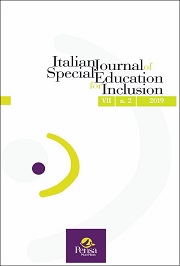L’inclusione degli studenti con disabilità nella formazione universitaria a 25 anni dalla Dichiarazione di Salamanca: overview e highlights
DOI:
https://doi.org/10.7346/sipes-02-2019-12Abstract
The Salamanca Statement inaugurated a period of rights which aimed to promote inclusion at all levels of education, including higher education, considered strategic in the preparation of people
with disabilities for adult life.
This article aims to provide an overview of the principal steps which, from 1994 up to the present day, have marked the gradual process of the opening up of the post-secondary institutions to disability, in order to critically highlight the progress and the challenges of a process in act. The paper, based on a review of the international and national literature, is organized into two periods (with the UN Convention as a watershed). From the universities’ initial concern to guarantee equality of access to students with disabilities by removing architectural barriers and offering services, we move to a subsequent phase in which new complex trends emerge which have innovative and inclusive potential. Among these we find the quality of the teaching; the monitoring of academic careers and the transition to the labour market; the evolution of the Disability Services from campus support centres to campus resource centres; staff training; and the more active participation of students. There is an open challenge to continue to gather evidence and reframe these issues, because improving the quality of academic experiences can guarantee better future lives for students.


